Important tool updates - Learn more
- Learn
-
Articles
Read about influencer marketing
-
Growthnotes - Newsletter
Insights for the modern marketer
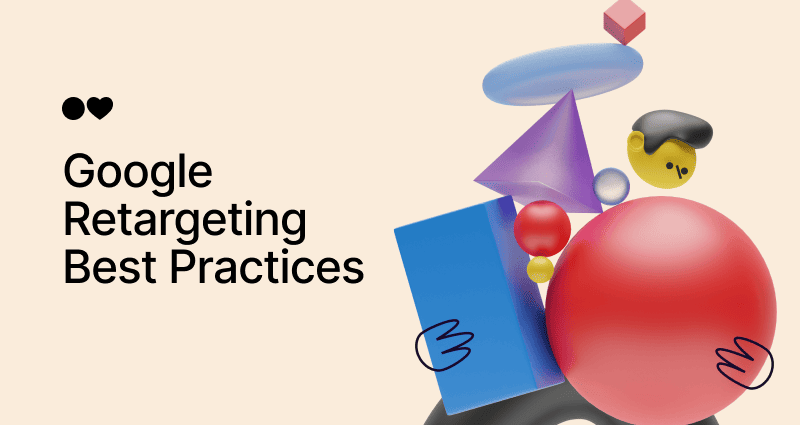
Many potential customers leave your site without converting. But retargeting ads can help bring them back. In fact, Cropink reports conversion lifts as high as 150% when retargeting is used smartly.
Performance max and some other AI-powered tools re-engage warm audiences to create more personalized journeys.
In this guide, we’ll walk you through 15 tactics to reduce ad waste, lift engagement, and turn more views into paying customers.
P.S.: Check out our Google Ads PPC statistics breakdown for more proof behind these strategies.
Retargeting reconnects past website or app visitors, improving conversion rates by 40% and increasing brand recall by 57% (says Cropink).
So, let’s see exactly why this works.
Google retargeting targets users who’ve already interacted with your website, app, or ads, keeping your message top of mind as they browse.
It uses first-party and behavioral data from Google Analytics and Tag Manager to show personalized ads based on what users looked at or left in their cart.
As shared earlier, that level of relevance can increase conversion rates by up to 150% because it helps people remember you and come back to buy.
Pro tip: A clean setup with dynamic feeds and accurate tags separates high-ROAS campaigns from wasted ad spend. See our in-depth Display Remarketing Guide for more.
Google’s automation, especially Performance Max paired with Smart Bidding, handles bid and placement optimization across Search, YouTube, Display, Discover, Maps, and Gmail.
It uses first-party data, audience segments, and conversion values to prioritize users most likely to buy. Bids rise on high-intent queries and drop for lower-intent traffic. With value-based strategies like Maximize Conversion Value and tROAS, the system pushes budget toward higher-margin conversions.
Supporting pieces like Responsive Search Ads, Dynamic Remarketing (with a product feed), Customer Match, and audience signals make it easier to scale profitable reach.
Pro tip: From our experience, accurate conversion tracking and seeding PMax with high-value customer lists sharpen results early and shorten the learning period.
With Google Analytics 4, Tag Manager, and the Google Ads tag, you have all the tools you need to set up your retargeting foundation.
Let’s take a closer look.
Start by adding the Google Ads tag to track actions like purchases or form fills, which power conversion tracking. It records every interaction that matters.
Connect it with Google Analytics 4, where you can create remarketing audiences based on behaviors (e.g., product page viewers) and have them auto-export to Google Ads for use in display or search retargeting.
Then, use Google Tag Manager to manage these tags flexibly.
For instance, trigger the Google Ads tag on “add_to_cart” or “page_view” events. From our experience, misaligned tags are the top cause of audience under-population and wasted ad spend.
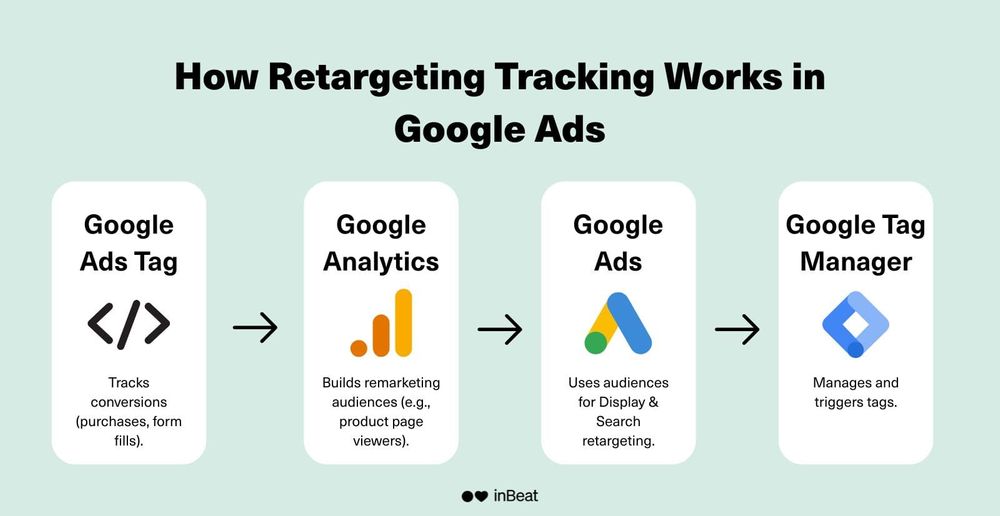
Building your first remarketing lists in Google Ads starts with defining which website visitors you want to re-engage: are they cart abandoners, product page viewers, or past purchasers?
Then, use Google Analytics 4 or Google Tag Manager to collect behavioral data and sync it to Audience Lists automatically.
From our experience, segmenting by funnel stage (e.g., cart vs. browse) improves conversion rates.
Insider tip: Continuously refine criteria and use Customer Match lists to merge CRM insights, ensuring every ad impression targets high-intent users.
Micro-segmenting Audience Lists within your Google Ads account lets you tailor retargeting ads by funnel stage or behavior.
Next, we’ll look at how it creates personalized ad experiences and drives higher conversion rates.
According to AdRoll, behavior-based retargeting ads outperform generic display campaigns 10x in click-through rates.
To start, track website visitors who viewed key product pages or triggered cart abandonment using Google Analytics 4 and Google Tag Manager.
Next, segment Audience Lists by engagement, e.g., video watchers or cart abandoners. Then, craft personalized ad content matching their on-site intent to drive higher conversions.
From our experience, mapping audience segmentation by funnel stage, awareness, consideration, and decision, lets you deliver more relevant retargeting ads.
You can map your funnel stages in Canva or Miro to visualize audience segments before building retargeting ads.
Pro tip: Use Google Analytics 4 to track user paths, then tailor ad creatives and bidding strategies toward high-intent users, increasing conversion rates while optimizing ad spend across the funnel.
Incrementality testing shows if remarketing ads truly drive new conversions or claim credit for inevitable ones.
Up next: Learn how incrementality works and explore our MMM vs. MTA attribution guide.
In 2025, testing for incrementality is a must. It’s how we, marketers, prove real performance.
In our work, we’ve seen it clarify whether retargeting actually drives new conversions or just grabs credit (attribution).
That distinction directly impacts ROAS. In fact, in one case, Goodway Group saw an 11% true lift from YouTube campaigns alone.
P.S.: Read our guide on Multi-Touch Attribution next.

From our experience, one of the most effective ways to test incrementality is running geo holdout tests and comparing markets exposed to retargeting ads versus unexposed ones.
We recommended using Google Analytics 4 for conversion tracking and Looker Studio for performance visualization.
Then, measure lift, CPA, and ROAS to refine your bidding strategies, validate attribution, and maximize overall marketing ROI.
Dynamic remarketing ads automatically display products or services users viewed, creating personalized ad content that boosts conversion rates. We’ll look at this closer next.
We’ve seen dynamic feeds on the Google Display Network consistently improve ad performance.
For example, emphasizing recently viewed items in dynamic retargeting can increase conversions by up to 40%.
To maximize those results, we recommend using Google Merchant Center and catalog feeds to auto-serve tailored creatives. Plus, always pair with compelling visuals and clear CTAs to drive return purchases.
Expanding dynamic retargeting ads across broader product categories helps capture diverse interests. In fact, advertisers can see stronger engagement and higher CTRs when using category-level feeds.
To get started, use Google Merchant Center to group similar products and let your ads auto-adapt, keeping relevance high and conversions steady across the Display Network.
Implement consistent A/B testing across your retargeting ads to refine ad copy, ad formats, and ad creatives. We’ll show you what to test and share best practices to improve performance next.
We’ve seen that A/B testing our Google Ads copy, visuals, and calls to action in retargeting campaigns can raise conversion rates. That’s because we can understand what resonates with our audience, and double down on it.
So, be sure to compare audience segmentation and ad formats, like carousel ads versus static banners, to see what clicks.
@chrislazo Use A/B testing in your marketing to fogure out what works best! #contentmarketing #marketingstrategies #abtesting ♬ original sound - Chris Lazo | Content Marketing
From our experience, effective A/B testing in Google Ads means running experiments for at least two weeks to reach statistical confidence.
Define your sample size, track conversion rates in Google Analytics 4, and visualize results in Looker Studio for data-driven decisions that support marketing ROI.
Plus, use Google Ads Experiments or Optimizely to compare ad creatives and copy.
Excluding past converters from your remarketing campaigns prevents wasted ad spend, improves marketing ROI, and allows you to focus retargeting ads on fresh Audience Segments with higher conversion potential.
For example, in one Performance Max case, Shoebacca improved ROAS by 26% after removing past buyers (says AnalyticsLiv).
We recommend using Google Ads’ conversion tracking and Customer Match to auto-exclude these users and focus your marketing budget on new, high-intent visitors.
That brings us to the next point:
You can build exclusion audiences in Google Ads by filtering remarketing lists that include past purchasers or subscribers.
Here’s how:
Pair this with Google Analytics 4 data to refine segments.
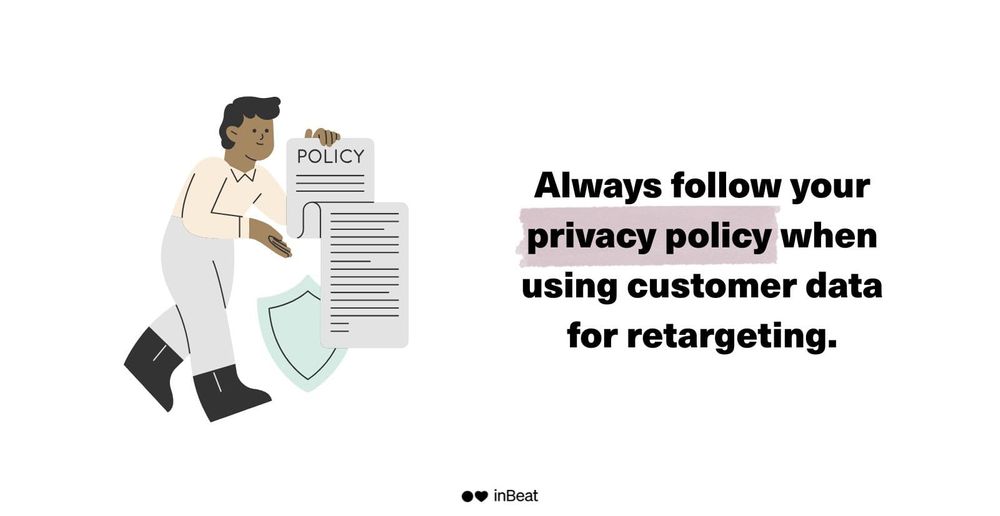
In this section, we’ll explore designing ad creatives that anticipate users’ next steps.
That’s because personalized ad content and tailored retargeting ads drive higher conversion rates and long-term customer engagement. More on this next.
Generally, carousel ads (and responsive search ads) deliver higher CTRs than other ad formats, because they’re interactive.
Use this in your Google Display Network campaigns with on-brand ad creatives. Also, optimize formats for mobile shoppers to improve recognition and conversion rates.
Here are mobile and desktop examples:
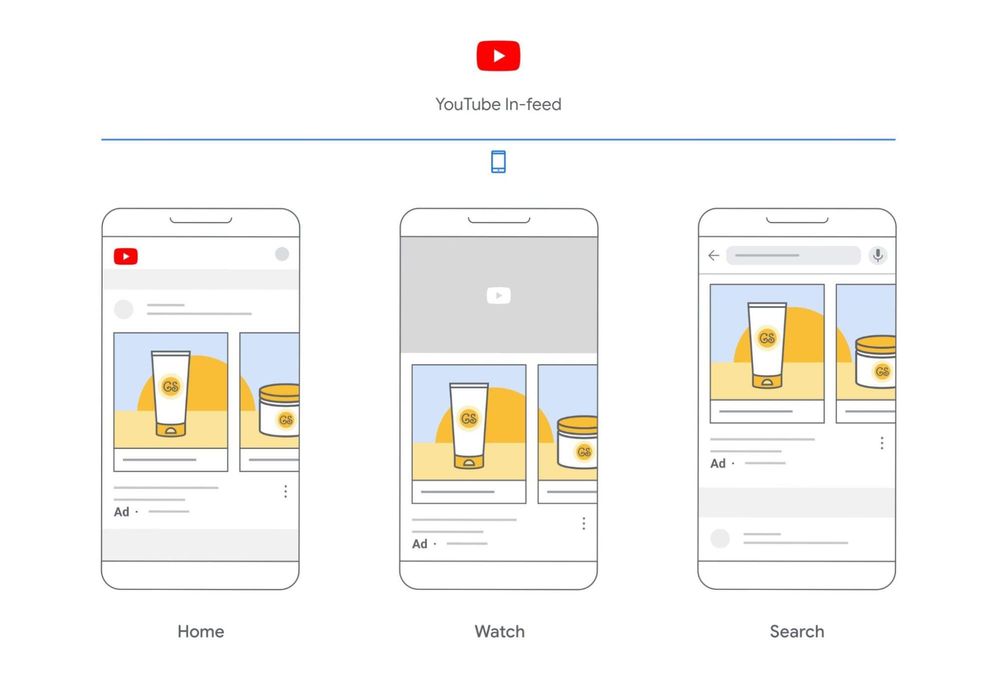
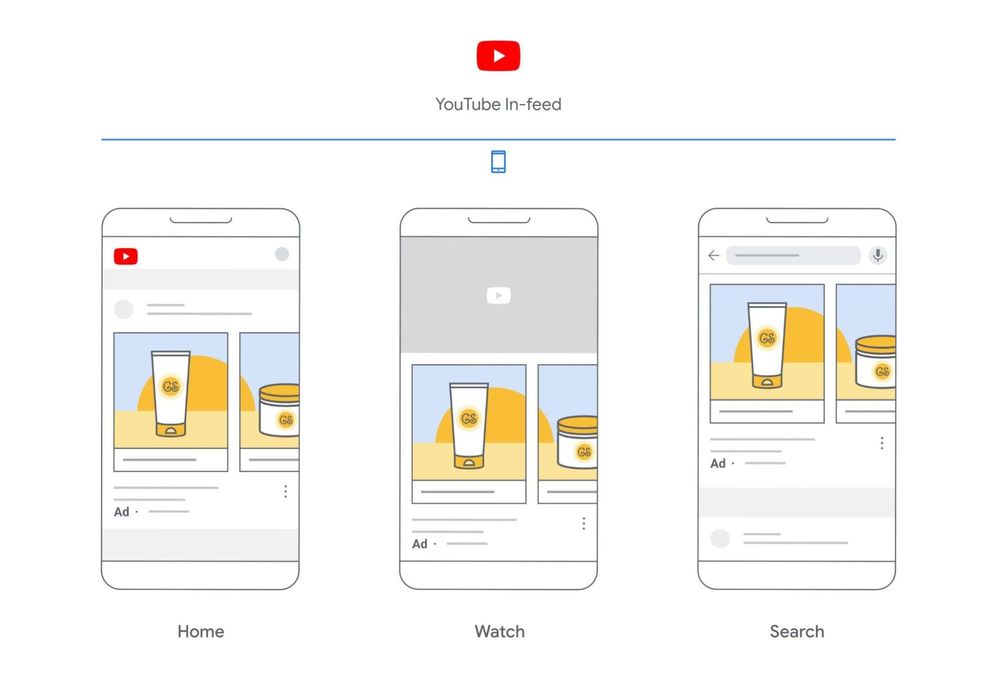
WordStream reports that clear ad copy and strong CTAs can increase conversion rates by 25%.
We agree; we've found that adding emotion-driven language and relevant visuals in retargeting ads also improves Quality Scores and overall marketing ROI.

We’ve seen that personalizing retargeting ads by behavior, demographics, and interests increases conversions.
That’s why we advise you to analyze segments like cart abandoners or loyal customers, tailor messaging, and use dynamic content.
And it works:
In Ouibus’s case, they saw a 10% monthly lift in purchases after customizing retargeting ads for different audience segments.
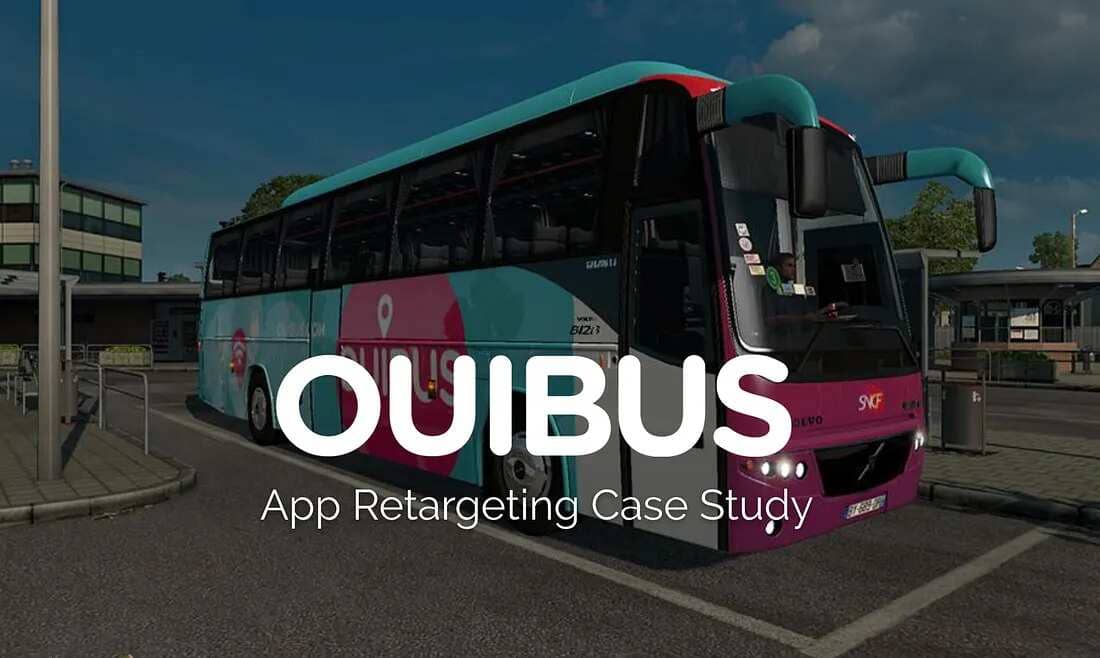
Sequential retargeting through the Google Display Network lets you tell a narrative across touchpoints.
For example, start with a product demo, follow with social proof, then deliver an exclusive offer. This kind of staged storytelling has lots of chances to improve engagement and conversion rates.
Sequential ads work like this. You move users down the funnel in steps:
awareness → consideration → conversion.
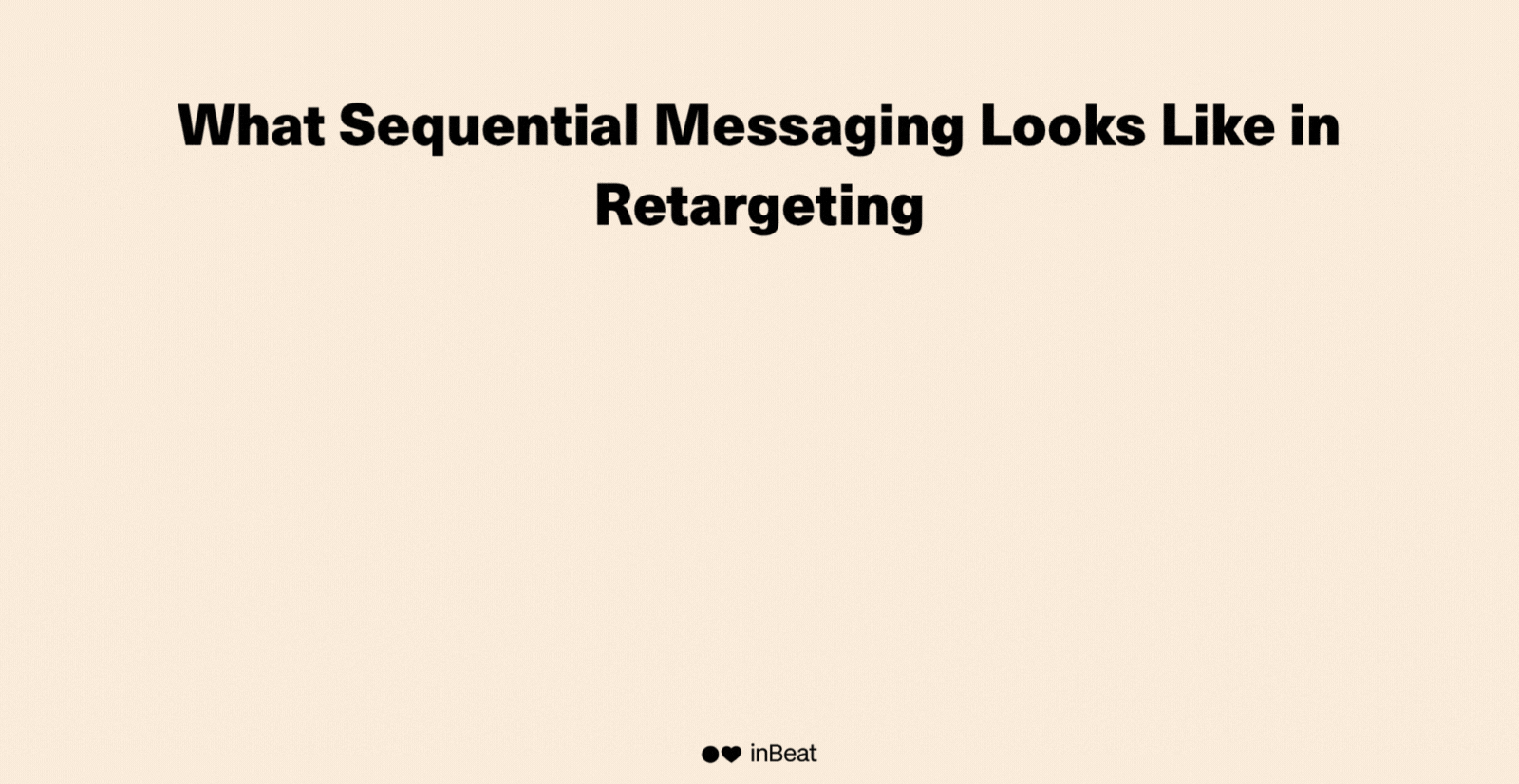
Say someone viewed a product page; re-engage them with a carousel ad highlighting features, then nudge them later with a responsive search ad pairing urgency with social proof.
Pro tip: Track conversion rates per stage in GA4.
Let’s nail this. Here’s how:
YouTube retargeting in Google Ads lets you re-engage people who watched your videos or visited your site.
Next, we’ll cover why YouTube retargeting drives engagement and some best practices.
From our experience, video ads deliver richer storytelling, especially across YouTube’s audience reach of over two billion monthly users (DataReportal, 2025). That’s why they have a stronger recall than other ads.
YouTube ads also maintain notably high viewer engagement throughout playback, outperforming static formats in watch time.
However, we recommend using Google’s conversion lift tools to track conversions driven by your video-based ads. That’s so you can adjust your strategy when needed.
Speaking of that, here are the:
We’ve seen that the strongest YouTube retargeting tactics in Google Ads focus on high-intent audience segments, like video watchers or product page viewers, and cart abandoners.
Ad formats we back for sustaining engagement are skippable in-stream and bumper ads for recall and reach.
Also, keep creatives front-loaded with branding and strong CTAs, then measure conversion rates with Google Analytics 4.
Remarketing Lists for Search Ads (RLSA) let you target high-intent website visitors on Google Search, using custom bid strategies and tailored ad copy to maximize conversion rates and ROI.
Here’s the lowdown.
Adjusting bids for past website visitors in Google Search increases conversion rates.
To increase bids for high-engagement users, use Remarketing Lists for Search Ads (RLSA). Then, lower them for low-intent users.
Use remarketing audiences together with automated bidding strategies (like Target ROAS or Target CPA) so Google can bid more intelligently on those past visitors, and you’re all set.
For returning users, use dynamic ad copy that references their prior behavior (e.g., "You left items in your cart").
This email copy by McDonald’s hits all the right notes:

Don’t just reuse generic headlines. Use keywords, urgency, and social proof, because click-through rates can jump with personalized copy.
Cross-device retargeting ensures your ads follow users across mobile, tablet, and desktop.
To get the most out of it, use consistent ad creatives and formats so your messaging remains unified and strengthens brand recall. We’ll dive into this next.
According to Kinsta, 85% of users start shopping on one device and finish on another.
Based on this (and from experience), it’s clear that ignoring cross-device behavior risks undercounting conversions and misallocating budget.
As a marketer, you’ll need strategies that track and engage across screens.
Here are the steps to effective cross-device retargeting:
Smart Bidding uses real-time signals to adjust bids for conversions. Next, we’ll explore target CPA & ROAS for retargeting and conversion value optimization.
P.S.: See our Google Ads bidding strategies guide for efficiency tips.
For retargeting campaigns, Target CPA helps you control acquisition costs by letting Google automatically adjust bids to hit your desired cost per conversion. We recommend you to use it for warm audiences where the goal is to drive more sign-ups or sales efficiently.
If your conversions have different values (like in eCommerce), Target ROAS is a better fit because it optimizes bids to maximize total revenue rather than just the number of conversions.
When you combine it with remarketing lists, it helps you allocate more budget toward users with a higher predicted purchase value.
Insider tip: Retargeting is one piece; here’s what paid media really entails.
Conversion Value Optimization (CVO) focuses on maximizing revenue per conversion, not just volume.
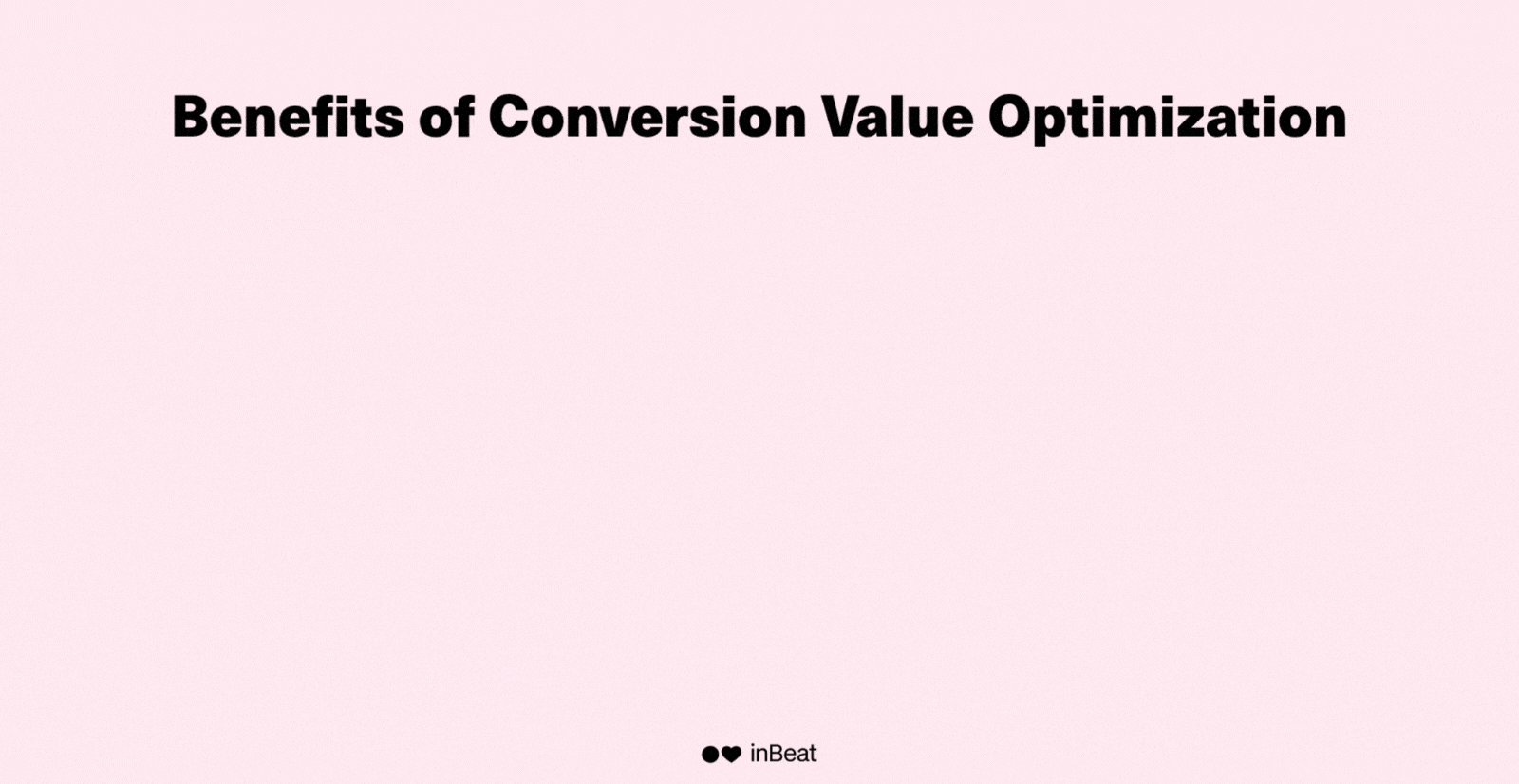
In Google Ads, smart bidding uses machine learning to predict and optimize conversion value across audiences, including high-intent or retargeted users.
Here’s how we apply this.
We use tools like GA4 and Looker Studio to uncover high-LTV segments, then allocate more budget to the audiences driving stronger long-term returns.
Using frequency capping in Google Display Network prevents ad fatigue, controls your ad spend, and maintains engagement by limiting how often retargeting ads appear to the same audience segments.
In practice, we’ve seen that setting frequency caps on the Google Display Network keeps retargeting ads visible without overwhelming users.
As we explained, caps limit how often the same person sees your ad in a set timeframe, preventing dreaded ad fatigue and improving CTRs.
As always, we recommend using Google Analytics data to test, monitor, and adjust caps for balanced visibility and conversions.
Refreshing ad creatives every few weeks prevents fatigue and keeps remarketing campaigns engaging.
Be sure to align visuals with audience trends and test formats using the Google Ads Asset Library. Then, track CTR and engagement shifts in Google Analytics 4 to spot when creative updates are due for better performance.
Similar audiences, once built from first-party and remarketing data, identified users with comparable behaviors to your best shoppers.
Today, Google’s AI audience expansion automatically refreshes those segments using GA4 and CRM data.
Basically, the same principles guide smarter retargeting in 2025 as best practices.
To maintain precision, we’ve seen that seeding AI-driven audience models with high-value converters works well.
Here’s how to do it, courtesy of Tim Sutton from Launchpresso:
Plus, use GA4 dashboards to monitor audience drift and scale gradually for a stable ROI.
While traditional similar audiences are deprecated, value-based expansion continues to deliver strong performance across remarketing and new customer acquisition in Google Ads.
Customer Match in Google Ads uses first-party data from CRM lists and email addresses to improve targeting accuracy and conversions, laying the groundwork for high-value retargeting and exclusion-audience strategies.
Let’s take a closer look.
Uploading CRM lists and email addresses to Google Ads through HubSpot, Salesforce, or direct upload in Audience Manager enables precise Customer Match targeting, from our experience.
For personalized ads and increased ROI, we recommend segmenting your high-value customers first, just like in the previous method.
Privacy first: Always hash data, secure consent, and align with GDPR / CCPA before activating first-party lists for retargeting.
Exclusion audiences in Google Ads cut wasted spend by removing recent buyers or inactive users from remarketing.
In Audience Manager, exclude these segments using GA4 or Customer Match data. Start with criteria like “purchased in the last 30 days” and refine over time to keep your ads relevant and budgets efficient.
We’ve seen that landing pages for retargeting campaigns dramatically improve performance. And Unbounce agrees: well-optimized landing pages convert at a median of 6.6% across industries.
Get the winning formula by ensuring pages load fast, stay mobile-friendly, and align with ad copy to reduce bounce rates, like so:
Also include clear, matching calls to action that guide returning visitors. Then, test layouts with A/B experiments in Looker Studio or Google Optimize, and track outcomes via GA4 and Tag Manager.
From what we’ve seen, personalizing content for known users raises engagement and lead quality, so execute that too.
Optimized retargeting can increase conversion rates because retargeted visitors are as much as 70% more likely to convert than first‑time users (according to Cropink).
We’ve also seen that with layering data-driven audience segmentation, personalized ad creatives, and smart bidding logic, clients can see ROAS jump well above typical benchmarks.
Ready to turn idle clicks into reliable revenue? Book a free strategy call with inBeat Agency and let us build your high-performance targeting engine.
Use retargeting ads across the Google Display Network to re-engage website visitors.
Then, combine audience segmentation, dynamic retargeting, and strong ad creatives to raise conversion rates.
According to Gitnux, retargeted ads often show CTRs around 0.7%, vs. ~0.1% for standard display ads across platforms.
Use insights from Google Analytics 4 to refine audience segments, enhance your ad copy, and run A/B tests on creatives.
Here’s why that matters: Better ad relevance and landing page experience can improve Quality Score, which can also lead to lower costs.
Remarketing re-engages customers through email addresses or CRM lists.
On the other hand, retargeting usually means showing ads (e.g., display, search, social) to people based on on-site behavior (via pixels, tags, cookies).
CRM + ad retargeting complement each other quite well: CRM helps nurture your existing audience, while ads help re-engage or convert visitors.
No, Smart Campaigns were fully replaced by Performance Max in 2022. Google migrated all Smart and Local Campaign functionality into its AI-driven Performance Max format, which now manages bidding, targeting, and placements across Search, YouTube, Display, Maps, and Gmail.
If you still see “Smart Campaign” data in your account, it’s historical. All new campaigns are built as Performance Max, Google’s newer automation model.